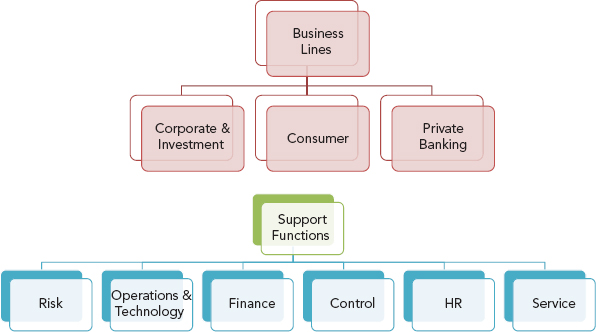Chapter Twenty Eight
Banks and Service Relationships
MANY OF THE DISCUSSIONS ON transactions, balance sheet and liquidity, and risk involve the use of banking products and relationships. It can be said that the bank and the product and service capability and offerings differentiate two identically staffed and structured treasuries. Indeed, the same bank and service team can provide diametrically opposite service levels to different corporate clients. In this context, a discussion around managing the banking and service relationship, evaluating the bank’s performance, and picking the right banks with a long-term relationship in mind is important and the aim of this chapter.
SAMPLE BANK ORGANISATION STRUCTURE
Banks have evolved over time to streamline their organisation to maximise customer impact. A typical commercial bank is comprised of various functions, as shown in Figure 28.1.
FIGURE 28.1 Typical Bank Functions

Business-wise, commercial banks have a corporate and investment (or wholesale) arm, a consumer division that caters to individual banking needs, and a private banking division that caters to high-net-worth individuals.
The key support functions are:
- Risk management, which has oversight of the credit, market, and liquidity risks of the organisation
- Operations and technology, which runs the bank operations; these may be unified across the three businesses or separate, ...
Get The Handbook of Global Corporate Treasury now with the O’Reilly learning platform.
O’Reilly members experience books, live events, courses curated by job role, and more from O’Reilly and nearly 200 top publishers.

